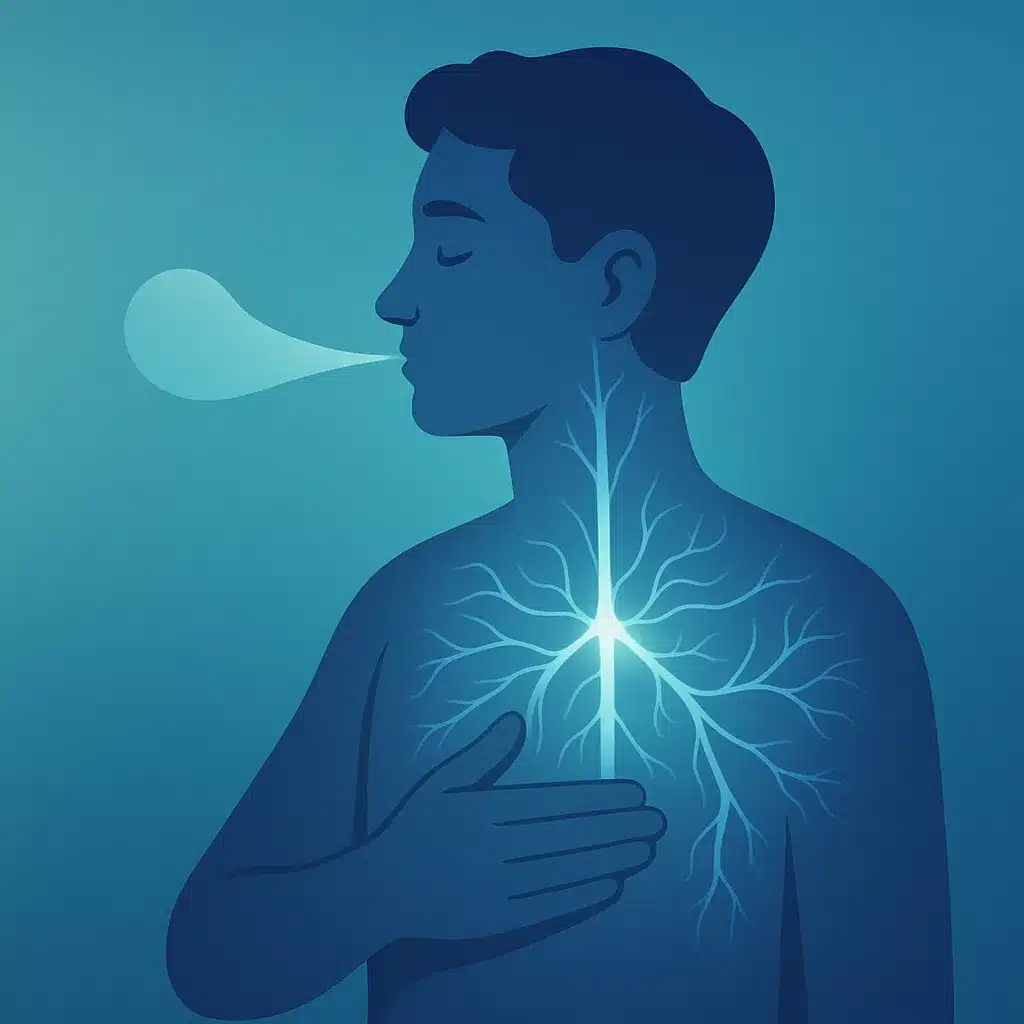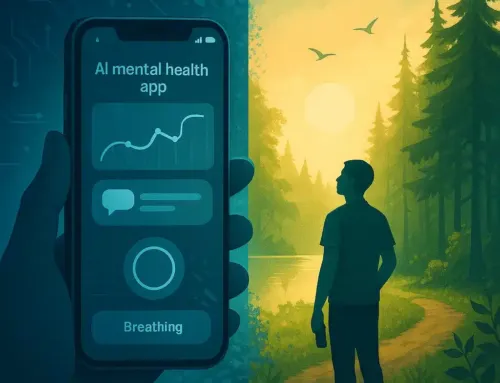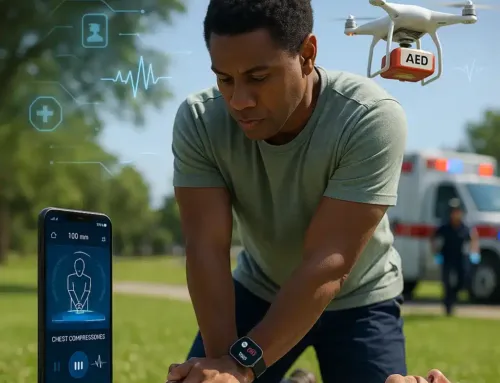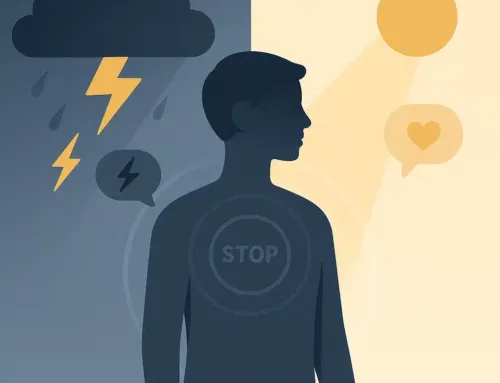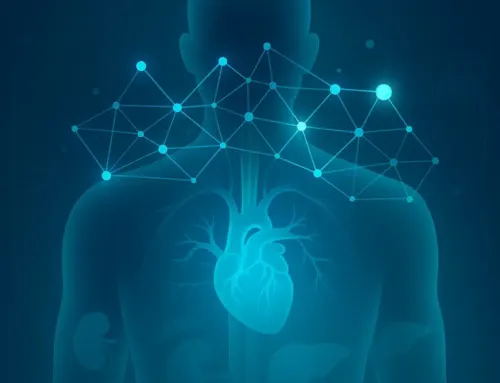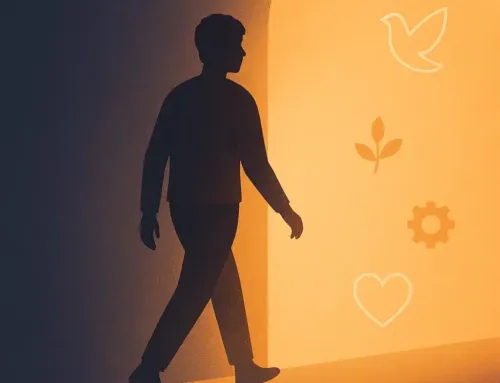
Approx. read time: 8.1 min.
Post: Fix Your Nervous System: 10 Science-Backed Ways
If you’ve ever felt like life is happening to you instead of with you, there’s a good chance your nervous system is overloaded. Panic attacks, chronic stress, fatigue, mood swings, brain fog, and even physical pain often trace back to a dysregulated system.
Your nervous system is the control center for how you experience the world. It decides whether you’re calm or anxious, present or distracted, resilient or overwhelmed. When it’s dysregulated, minor stressors feel like major threats. When it’s regulated, you move through life with clarity, ease, and confidence.
The key to turning things around? Learn how to calm and rewire your nervous system. Two of the most powerful tools are meditation and intentional calmness. Below you’ll find the “why” and the “how” — including ten practical, science-backed ways to restore balance so you can live without panic, tension, or emotional chaos.
🧭 What You’ll Learn
-
What your sympathetic (fight/flight) and parasympathetic (rest/digest) systems do.
-
Why modern life traps many of us in “always on” mode.
-
How meditation literally reshapes stress pathways in the brain. Harvard Gazette+2Harvard Gazette+2
-
Ten daily, doable practices — from slow nasal breathing to sleep hygiene — that retrain your body toward safety.
🧠 The Nervous System: Your Inner Operating System
Your autonomic nervous system has two main branches:
-
Sympathetic (fight/flight): mobilizes energy for challenge and threat.
-
Parasympathetic (rest/digest): slows the heart, supports digestion, and returns you to baseline calm. Massachusetts General Hospital+1
In a healthy rhythm, you move fluidly between them. But modern stressors can keep the “gas pedal” pressed down, leaving the “brake” weak — a recipe for anxiety, poor sleep, and burnout. Harvard Health
⚖️ Why We Get Stuck in Overdrive
Constant notifications, 24/7 news, and deadline pressure encourage doomscrolling and digital overuse, which correlate with worse mood, disturbed sleep, and higher stress. Setting content boundaries is a nervous system intervention, not just a lifestyle preference. Harvard Health+2PMC+2
🧘 Why Meditation and Calmness Work (Science Snapshot)
Regular meditation can reduce amygdala reactivity (your brain’s alarm center) and strengthen prefrontal regulation, improving your pause-button under stress. These brain changes have been observed after structured 8-week programs. Harvard Gazette+2Harvard Gazette+2
Slow, paced breathing boosts vagal activity and heart-rate variability (HRV) — reliable indicators of parasympathetic tone. Meta-analyses show HRV improvements with deliberate slow breathing. PubMed+1
🪢 Meet the Vagus Nerve (and HRV)
The vagus nerve is your physiological “brake pedal.” Stimulating it via slow exhalations, relaxation, and certain reflexes tilts you toward calm and recovery. Cold water on the face can trigger the diving reflex, briefly slowing heart rate and reducing cortisol responses to acute stress — a powerful “reset” for spikes of anxiety. Massachusetts General Hospital+2NCBI+2
✅ 10 Ways to Fix Your Nervous System and Actually Enjoy Life
🧘♀️ 1) Daily Meditation (Even 5 Minutes Helps)
Consistency beats duration. Sit comfortably, attend to the breath, and when the mind wanders (it will), gently return. Evidence shows meditation reduces amygdala activation and strengthens regulatory circuits within weeks. Apps like Insight Timer, Headspace, or Calm can help. Harvard Gazette
🫁 2) Slow, Nasal Breathing (Box or 4-6)
Fast, shallow mouth breathing is a stress signal. Use box breathing (inhale 4, hold 4, exhale 4, hold 4) or longer exhales (inhale 4, exhale 6). Slow-paced breathing elevates vagal-mediated HRV — a biomarker of resilience. PubMed+1
🌲 3) Nature Exposure (Short Doses Work)
Natural light tunes your circadian rhythm; green spaces lower stress and improve sympatho-vagal balance. Even brief forest-bathing sessions can reduce burnout and support healthier cortisol patterns. Aim for 10–20 minutes outdoors daily. PMC+1
❄️ 4) Cold Exposure (Start with 30 Seconds)
End your shower with 20–30 seconds of cool/cold water or splash cold water on your face. The cold face test increases vagal activity and can blunt the stress hormone response during acute challenges. Breathe steadily as the water hits. PMC
📵 5) Digital Detox & Content Boundaries
Your body doesn’t distinguish between real and perceived threats in your feed. Limit doomscrolling and set screen-free windows (especially 60 minutes before bed). Studies link doomscrolling with lower well-being and worse sleep/mood. Harvard Health+1
🧘♂️ 6) Gentle Movement & Stretching (Yoga/Tai Chi)
Tension lives in the body. Gentle, rhythmic practices (yoga, tai chi, walking) help discharge stress and restore balance. Reviews suggest benefits for stress, anxiety symptoms, and overall well-being. NCCIH+2PubMed+2
🍽️ 7) Eat in a Calm State (Hello, Rest-and-Digest)
Sit down, take 3 slow breaths, and minimize screens. Engaging the parasympathetic system improves digestion; mindful eating and relaxation practices support the gut-brain loop. PMC+1
🧱 8) Enforce Boundaries (Without Guilt)
Overcommitment keeps you in survival mode. Saying no kindly protects energy and prevents chronic stress cycles. APA guidance emphasizes balanced media, work, and recovery habits for mental health. American Psychological Association
😴 9) Prioritize Deep, Restorative Sleep
Adults should obtain 7+ hours nightly. Consistent bed/wake times, dim evening light, and a screen-free wind-down push your system toward recovery and emotional stability. AASM+1
🫶 10) Rewire Your Inner Voice (Self-Compassion)
Self-criticism is read by your body as threat. Brief self-compassion practices reduce stress, anxiety, and burnout across populations. Try: “I’m safe; this will pass; I can be kind to myself now.” PMC+1
📅 7-Day Starter Plan (Doable, Not Drastic)
-
Day 1: 5 minutes of breath-focused meditation + 10-minute outdoor walk.
-
Day 2: Box breathing (5 minutes) before any stressful task; eat one meal screen-free.
-
Day 3: Gentle 15-minute yoga or tai chi flow; lights low 1 hour before bed. NCCIH+1
-
Day 4: Add a 30-second cool shower finish; journal one boundary you’ll protect this week. PMC
-
Day 5: Digital “sunset”: no doomscrolling after 8 pm; read or stretch instead. Harvard Health
-
Day 6: 20-minute forest-walk (or nearest park); breathe 4-in/6-out as you stroll. PMC
-
Day 7: Self-compassion check-in: write a kind note to yourself; bedtime set to allow 7–8 hours. PMC+1
Repeat weekly, extending duration gradually. Small, consistent inputs re-educate your body toward safety.
🧰 Helpful Tools & Ideas
-
Breathing timers: search YouTube for “coherent breathing 5.5 breaths per minute” or try AHA’s 4-7-8 guidance and other stress-relief videos. www.heart.org
-
Education: Harvard overviews on stress, gut-brain links, and meditation’s brain changes. Harvard Health+2Harvard Health+2
-
Crisis spikes: use the cold splash or face-in-cold-water trick for a vagal reset (avoid if you have heart issues; consult your clinician). PMC
🚫 Common Pitfalls to Avoid
-
All-or-nothing thinking: skipping one session doesn’t mean you failed.
-
Late-night doomscrolling: strong predictor of poor sleep and rumination. Harvard Health
-
Overtraining when burnt out: start gentle; progress slowly. NCCIH notes mind-body practices are useful adjuncts, not always replacements, for clinical care. NCCIH
🔁 The Long Game: Healing Is a Daily Practice
Change is gradual and nonlinear. Some days you’ll feel progress; other days will feel sticky. That’s normal. What matters is consistency and compassion. Over weeks, your brain and body learn a new baseline: safer, steadier, more present.
❓ FAQs (Enable FAQ Schema in Rank Math)
Q1: How long before I feel calmer?
Many people notice shifts (better sleep, fewer spikes) within 2–4 weeks of daily breathing or meditation. Structural brain changes have been observed after 8 weeks. Harvard Gazette
Q2: What if meditation makes me anxious?
Try paced breathing or moving mindfulness (walking, tai chi) first. Short bouts often feel safer and still raise HRV. SpringerLink+1
Q3: Is there a “best” breathing pace?
A common target is ~5–6 breaths/minute with longer exhales, but comfort trumps precision. Meta-analyses support slow-paced breathing for HRV. PubMed
Q4: Do I need cold showers?
No. Cold exposure is optional. If used, start brief and avoid if you have cardiovascular issues. The cold face technique can acutely boost vagal tone. PMC
Q5: Can diet alone fix my nervous system?
Nutrition helps, but state matters too. Eating while calm supports digestion via the parasympathetic system; pair mindful meals with breath. Harvard Health
Q6: Is yoga or tai chi better for stress?
Both help. Evidence suggests each can reduce perceived stress; choose the one you enjoy and will practice consistently. NCCIH+1
Q7: How much sleep do I really need?
Adults should aim for 7+ hours most nights for mood, immune function, and emotional regulation. AASM
Q8: How do I stop doomscrolling?
Make it inconvenient: remove apps from the home screen, set app limits, and create screen-free zones (bedroom, meals). Research ties doomscrolling to poorer well-being. Harvard Health
Q9: What’s HRV and why care?
Heart-rate variability reflects your body’s flexibility to switch between stress and calm. Slow breathing practices raise HRV and vagal tone over time. SpringerLink
Q10: Can self-compassion really change stress?
Yes. Trials and reviews show self-compassion training reduces stress and emotional exhaustion. It’s a potent antidote to the inner critic. PMC+1
📣 Conclusion & CTA
Your nervous system isn’t broken — it’s been stuck in survival mode. Meditation, slow breathing, gentle movement, sleep, boundaries, and a kinder inner voice are practical ways to fix your nervous system and reclaim your day. Start small, stay consistent, and let the biology of safety compound.
📚 Sources & References
-
Harvard Gazette & Harvard Health Publishing — meditation changes brain networks; amygdala down-regulation. Harvard Gazette+1
-
Laborde et al., meta-analysis on slow breathing and HRV; plus 2024 HRV study. PubMed+1
-
AASM Sleep recommendations: adults need 7+ hours. AASM
-
Cold Face/Diving Reflex, vagal activation & cortisol. NCBI+1
-
Forest-bathing and stress/burnout outcomes. PMC+1
-
NCCIH summaries on yoga/tai chi for stress/anxiety. NCCIH+1
-
Doomscrolling & mental health impacts (Harvard Health; APA). Harvard Health+1
-
Gut-brain connection & mindful eating/relaxation for digestion (Harvard Health). Harvard Health
-
Self-compassion interventions reduce stress/anxiety. PMC
Note: This guide is educational and not a substitute for medical advice. Consult your clinician, especially before cold exposure or if you have cardiovascular, respiratory, or psychiatric conditions.


